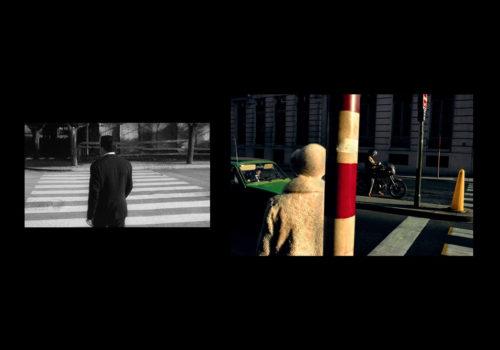Harry Gruyaert : I feel closer to visual arts and cinema than to journalism. I have seen films whose image has taught me more than the color photos I knew at the time. For example, “The Red Desert” by Antonioni. It is also in this film that he painted entire streets to try to create a very specific emotion. When I see the work of photographers who stage their pictures, I sometimes think that it would be so much easier to repaint a wall like Antonioni did, or ask a character to dress differently. But I think that I would lose this instantaneous miracle of the unexpected which takes my breath away, of this very physical phenomenon of photography which suddenly takes place.
Michelangelo Antonioni : All directors have in common this habit of keeping one eye open inside and another outside. At some point, the two visions converge and then, like two images that are in focus, end up overlapping. *
Harry Gruyaert : In practice, it’s a real fight with reality, a kind of trance to record just one image, or maybe miss it all. It is undoubtedly in the tug of war, between a pseudo-fiction and an alleged reality, that I am better off.
Michelangelo Antonioni : Deep down, there must be something behind naked eye reality, something that makes us more aware of our being. **
Harry Gruyaert : There is something else that binds me to Antonioni; I made a film in the 60s, the girl with whom I was very much in love, and who I was losing, she had a lover. Desperate, I thought the best way to prove my love to her was to make a movie about her and show it to her afterwards. By filming her, I distanced myself from her, I better understood my relationship with her, as well as her confusion. I broke away. It was the period when I saw “L’Avventura” and “La Notte”, many times, and the way Antonioni filmed Monica Vitti I was crazy about her) influenced me a lot.
Michelangelo Antonioni : The sharpness of my gaze is such that when my eyes will finish burning out, it is the wear and tear on the pupils that will kill me.***
*(Preface for Sei Film (1964). Écrits, Michelangelo Antonioni, Éditions Images Modernes, 2003.)
**(Le monde est de l’autre côté de la vitre (1975). Écrits, Michelangelo Antonioni, Éditions Images Modernes, 2003.)
***(Quote by Michelangelo Antonioni taken from the film by Enrica Antonioni, Faire un film pour moi c’est vivre, 1996.)
« Variations sous influence » was presented at the Cinémathèque in 2007 in the exhibition L’Image d’après, le cinéma dans l’imaginaire de la photographie.
















